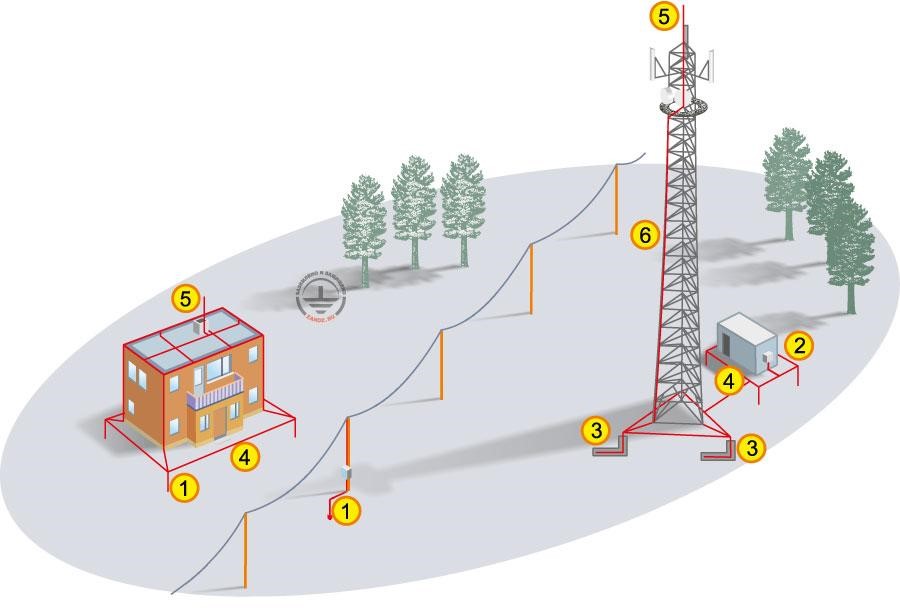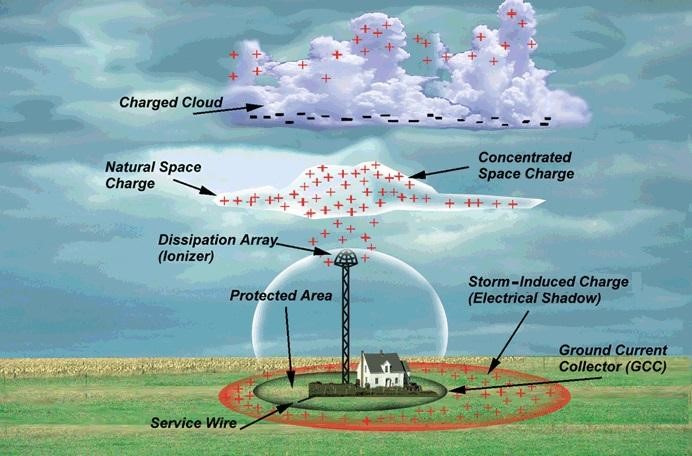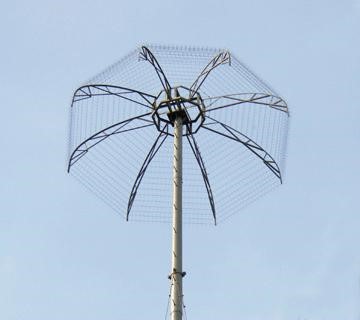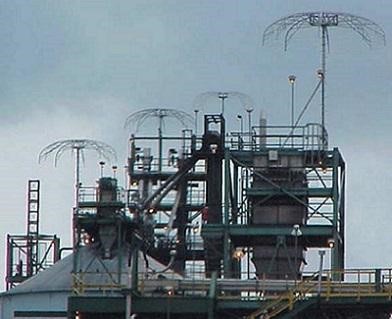After installing an external lightning protection system on his or her facility, the owner wants to be sure that it is fully secured against lightning hazards, the safety of people is ensured, and the integrity of the equipment is provided. Lightning protection methods most commonly used today are based primarily on the interception and redirection of a lightning strike. Their operating principle is to create an environment in which the lightning strikes into a specially selected and designed air terminal, after which the lightning current is directed by down conductors into the soil and distributed in it using the grounding device.

Fig. 1. Traditional external lightning protection system
The key feature of these systems is that they do not neutralize, but only minimize the hazards of lightning. Even if they save a facility from the physical destruction caused by the direct strike, these systems cannot fully eliminate so-called secondary hazards, i.e. the voltage surge resulting from the electromagnetic action of lightning current. These phenomena, in turn, can cause the failure or total breakdown of expensive equipment, cause the burn-up of sensitive microchips and other dangerous consequences. Of course, it is possible to deal with these hazards as there is a number of devices that can limit the voltage surge. But in this article, we want to tell you about a fundamentally different approach to the arrangement of lightning protection.
"Preventing is better than dealing with the consequences" - this old saying inspired engineers to create a system that can prevent the lightning strike into a protected facility. This is called Dissipation Array System (DAS).
DAS uses a phenomenon when a crown develops at sharply protruding structures subjected to a strong electric field caused by the thunderstorm cloud (we will call these structures "the receivers"). After the crown appears, it ionizes the surrounding air, thereby ensuring its own growth. When the growth reaches its critical rate, the crown goes into the streamer shape and generates a leader towards the cloud. Thus, the receiver discharges the lightning to itself, as is the case in a classic lightning protection system.
To avoid this, you need to distribute the electric field energy of a thunderstorm cloud throughout the greatest possible number of closely spaced receivers. In this case, all receivers ionize the air simultaneously, the growth of each individual crown is negligible and its transformation into the streamer shape becomes impossible.

Fig. 2. Dissipation Array System Operating Principle
Dissipation Array System is a metallic hemispherical "umbrella" with 5,000 to 10,000 thousand metal needles about 10 cm tall distributed on it. Each needle ionizes the air in the area above the "umbrella", minimizing the possibility of a counter-leader formation. So DAS does not intercept the lightning discharge but prevents its occurrence. As a result, the protected facility experiences neither the primary nor secondary hazards of lightning.

Fig. 3. DAS 'umbrella" structure

Fig. 4. DAS system installed at the facility
See also:
- FAQ on modern methods of lightning protection
- Free webinars for designers
- A series of articles "Lightning protection of residential and public buildings"
- Grounding in the lightning protection - design FAQ
- Advice on the selection, design and installation of grounding and lightning protection systems
Related Articles:



